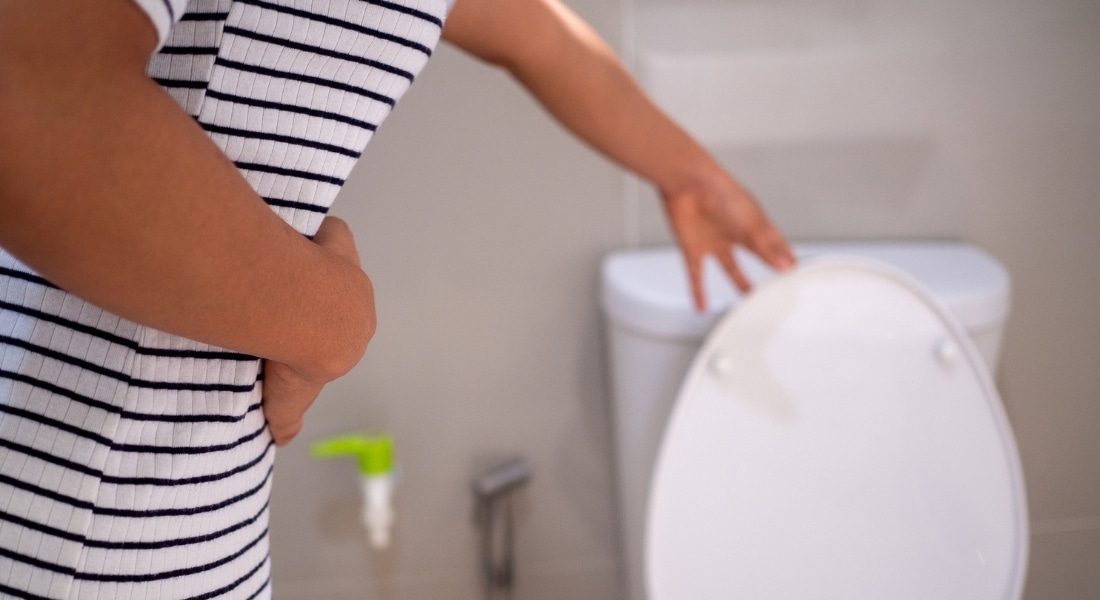Overactive bladder, also called OAB, may be common among older adults, but it’s not an inevitable burden of aging, and there are many solutions, from medications to lifestyle changes, and even “bladder Botox.”
“This affects up to 30% of older men and 40% of women, but it’s not a normal part of aging,” says Michelle McDonald, MD, urologist on the medical staff at Methodist Dallas Medical Center. “There are treatments for this that can improve your quality of life.”
There are three main symptoms of an overactive bladder: frequency, urgency, and incontinence, or losing control over urination. But what does frequent mean exactly?
“If you’re urinating more than eight times per day, that’s considered frequent,” Dr. McDonald says. “There’s no diagnostic test to prove you have an overactive bladder, but we, as urologists, can diagnose the problem and find a good solution.
Dr. McDonald talked about the many causes and treatments available for overactive bladder with a group from Methodist Generations, an education and enrichment program for older adults.

WHAT CAUSES OAB?
There are several factors that can cause the bladder muscles to contract involuntarily:
- urinary tract infections
- enlarged prostate for men
- hormonal changes from menopause for women
- neurological conditions like a stroke or Alzheimer’s disease
Certain medications can also trigger the need to urinate, including diuretics like furosemide (Lasix) for patients with high blood pressure and antidepressants like paroxetine (Paxil) and fluoxetine (Prozac).
But there are also a host of prescription medications that can help manage an overactive bladder.

HOW DRUGS CAN HELP
Drugs to treat overactive bladder tend to fall into two categories: anti-muscarinics, which block the bladder from contracting, and beta-3 agonists, which cause the bladder to relax.
The first category, also known as anti-cholinergics, includes oxybutynin (Ditropan) and comes with many side effects, including dry eyes, dry mouth, and constipation, and can even raise the risk of dementia.
“About 50% of the patients I prescribe these medications to will stop taking them due to the side effects,” Dr. McDonald says. “That’s why I prefer the newer agents.”
Those beta-3 agonist drugs include mirabegron (Myrbetriq) and vibegron (Gemtesa).
“Myrbetriq is a good place to start,” Dr. McDonald says. “I like Gemtesa best, but your insurance may not pay for it.”
There are also several medications for men whose enlarged prostate is causing their overactive bladder. These include alpha blockers like tamsulosin (Flomax) and 5-alpha reductase inhibitors like finasteride (Proscar or Propecia), which can shrink the size of the prostate by 30%.
“It’s the only thing that will literally decrease the size of your prostate without surgery,” Dr. McDonald says.

BOTOX FOR THE BLADDER?
There are alternatives for patients who prefer a longer-term solution without the potential side effects of medication. One of the most effective procedures is “bladder Botox,” Dr. McDonald says.
“I love bladder Botox,” she says. “The same Botox you think of for wrinkles can be used inside the bladder to freeze the muscles. It can be very effective.”
Using a device called a cystoscope, a urologist injects botulinum toxin systematically into the muscles throughout the bladder in an outpatient procedure where the patient can either be awake or under anesthesia. The effects of the procedure last up to six months.
“This is a great option that many people don’t know about,” Dr. McDonald says.

BLADDER ‘PACEMAKER’
Patients can also benefit from devices that stimulate different nerves in the body: either the tibial nerve in the ankle or the sacral nerve in the pelvis.
“Sacral neuromodulation is the more effective of the two,” Dr. McDonald says. “Think of it as a bladder pacemaker.”
In this two-step process, a temporary external device worn around the waist determines whether the device helps the patient urinate less frequently. If it’s effective, the patient gets a permanent battery-operated implant with a lead that stimulates the sacral nerve.
“It does help a good amount of people, but it does require surgery,” Dr. McDonald says.
Men whose enlarged prostates are causing bladder problems can also benefit from surgery and other procedures, from resection or removal of the gland to using high-pressure water (aquablation) or steam (Rezum therapy) to remove prostate tissue that’s blocking the urethra.

UNDERLYING ISSUES
Before resorting to surgery or even medication, there are more conservative steps that patients can take to ease an overactive bladder.
“There’s some hard work that we can do with lifestyle changes prior to medication,” Dr. McDonald says. “Addressing underlying medical issues can go a long way to solving this problem.”
Here are just a few of the underlying conditions that can lead to an overactive bladder:
- Weight management: Being overweight or obese puts extra pressure on the bladder, so losing weight can help.
- Diabetes management: “Diabetes is a big cause that doesn’t get enough attention,” Dr. McDonald says. “It’s because there’s excessive glucose in the urine that leads to frequent urination.”
- Sleep apnea: Patients who get up multiple times at night to urinate may be waking up because they have sleep apnea. Dr. McDonald noted that there are alternatives to a CPAP machine for patients who can’t tolerate it, including an implant.
- Manage constipation: Patients who suffer from chronic constipation may not realize that the condition may put pressure on the bladder, as well as the colon. She recommends natural laxatives like Prunelax.
- Stop smoking: Nicotine irritates the lining of the bladder and can even reduce its capacity, so kicking the habit can help.
Dr. McDonald notes that an overactive bladder is “purely a quality of life issue,” so if a patient can bear the symptoms, they aren’t putting their health at risk by ignoring it. But there’s also no reason to grin and bear it.
“An overactive bladder may limit other activities like exercise or travel if you feel like you need to urinate every 20 or 30 minutes,” she says. “Just know that if you don’t want to live like that, you don’t have to.”






